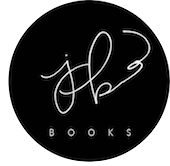So, you're writing a dual timeline? And you're thinking to yourself: hmm, how the heck is this going to work? You may be thinking: how do I balance these two or one storyline is more interesting than the other or why the heck is this so hard?
My novel, These are the Moments, spans ten years, flipping back and forth each chapter. There a few great ways to write this kind of narrative. I, however, have only done this once. So let me give you my version as well as some back-up plans, for those of you more structured folk.
A dual timeline is a novel/short story/what have you that takes place in… you guessed it, two periods of time. This could be historical fiction or contemporary or whatever you choose. My novel is a contemporary fiction, spanning high school into college and then post-college life. Here's how I did it:
Option One
Option One shall be known as "Jenny style," not because I have some sort of copyright on this, but just because I said so. If you read this post, you'll know that I started writing my novel on paper. I began with whatever scenes popped in my head at the time, not really concerning myself with plot points or the flow of the thing.
I saved that until I transferred it to my computer. In grouping my timelines, I decided to structure them separately, in "past" and "present" order. Yes, I waited until the stories could stand on their own before combining them into one, structured novel. The reason? I wanted to feel what it was like for each piece of each story to flow one after the other. I needed to make sure I didn't miss anything in each timeline before I sorted them together.
Why this works: This helped me to group my scenes together. It gave me confidence that each story had its own arc, before I fit each of them into place.
Why this doesn't work: Say you prefer writing your scenes in order. This method could potentially trip you up. Also, it's tricky to go over the transitions of the story this way. Maybe you have a certain idea for how the scenes should fall, but in combining them, it doesn't work.
Option Two
Option Two shall be known as the "Write Through the Dang Thing" method. If you're an excellent multi-tasker, and can envision the story each step of the way, then this is for you. In this method, you just write straight through both of the timelines, alternating back and forth each scene, if that's what you choose to do.
It's important to give equal time to each timeline, as each is equally important. Remember: each story informs the other. Personally, I don't think I could master this method. I'm not very good at envisioning my story step-by-step, because I'm always coming up with new plot ideas that I need to weave into the existing story.
Why this works:It allows you control over where both of your dual timelines are heading, and let's you keep a tight back-and-forth between them.
Why this doesn't work: It's difficult to handle the progression of one story, let alone two. There's a greater chance of getting stuck.
Option Three
Let's call option three the "Cheater" method. Okay, it's not really cheating, but you'll get the idea. This is a method for a novel with flashbacks or a story within a story. This is a novel that doesn't give equal time to each timeline, but rather uses one of the time periods occasionally through the work. This could be in the form of a letter or a story or dreams.
For this type of story, you'll need a strong example from the secondary timeline in order to really sell it. The purpose of the secondary timeline in this kind of novel is to shed some light that we might not otherwise see on the primary timelines.
Why this works: It helps you to "show" rather than "tell," depending on the way you choose to write it. This pulls the reader out of the story for just a moment or two.
Why this doesn't work: It can come off as gimmicky, if not done correctly. Try to be organic with using this tool, and think to yourself, "Can my story survive without this?"
Okay, so there you have it! A lesson in writing dual timelines. Have you ever written a story this way? If so, what's been your biggest challenge/success?

